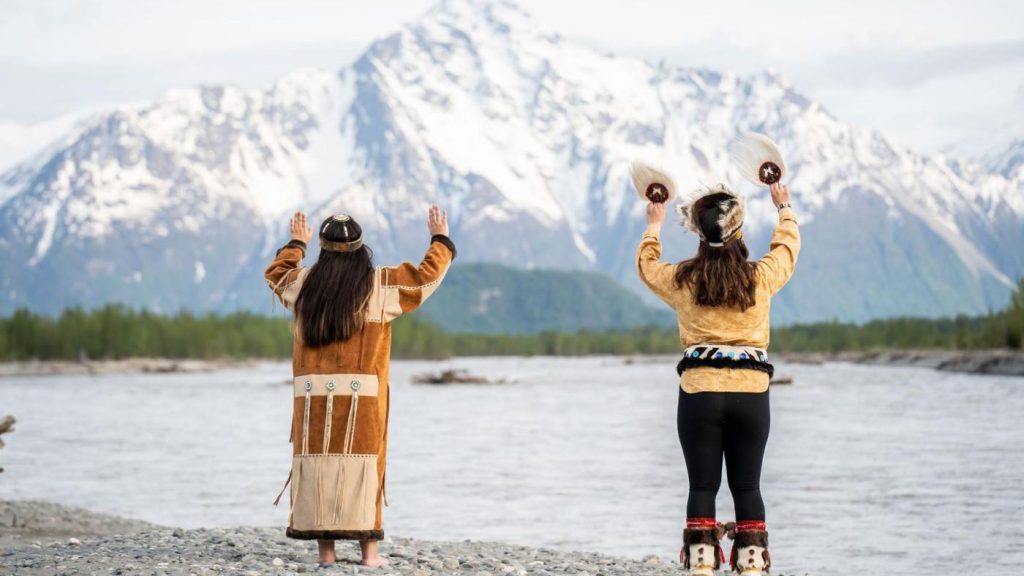Exploring Alaska Native cultures is a priority for many visitors to Alaska. With over 10,000 years of human history, Alaska offers countless opportunities to learn about our traditional lands, languages, and ways of life. Listen to stories passed down by elders and feel the heartbeat of drums used in traditional dances. Watch a blanket toss at a whaling party, learn about totem pole carving techniques passed down through generations, and discover regional and local Alaska Native functional and creative arts, from basket carving and weaving to sewing and silversmithing.
Generally, there are five groups of Alaska Native peoples identified by region: The Iñupiat and Yup'ik of St. Lawrence Island in the Arctic; Athabascan in south-central and interior Alaska; Yup'ik and Cup'ik, Unangax̂ and Sugpiaq (Alutiiq) in southwest Alaska; and Eyak, Haida, Tsimshian and Tlingit in the Inner Passage.
Alaska Native cultures deeply influence our way of life, from the names of rivers, mountains, and communities on traditional lands to the art, architecture, and culture of our cities. Approximately 15 percent of Alaska’s 730,000 people are Native, with 20 distinct cultures and 300 different dialects. Many Alaska Natives live in villages scattered along Alaska’s coastline and rivers, where they still practice a traditional subsistence lifestyle based on hunting and fishing. Across all five regions of our state and in communities large and small, our culture and history are shaped by Alaska Native language, artwork, stories, ceremonies, and customs.
Download our NEW Guide to Alaska Native Culture to explore further.


